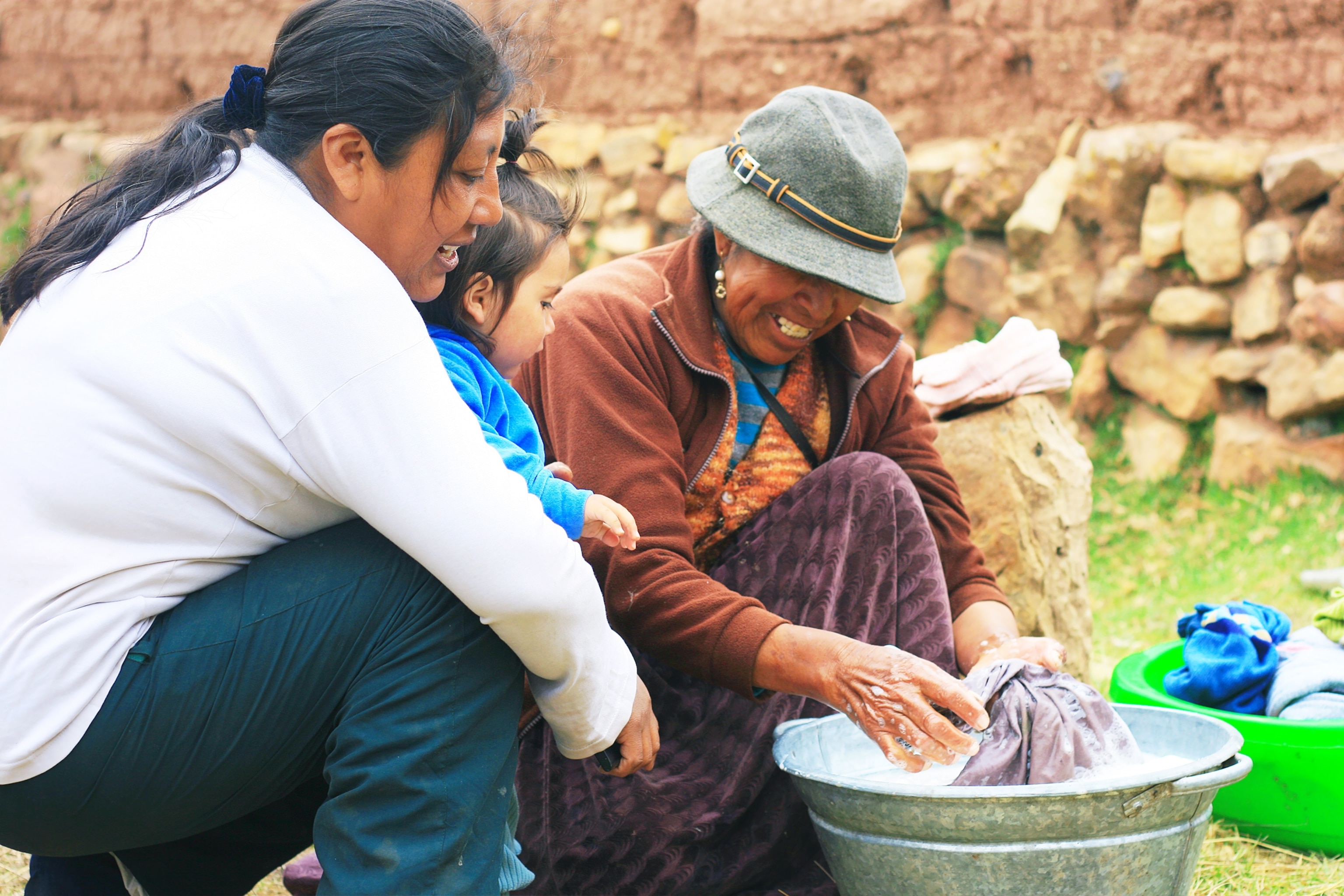Toward a living wage: What it is and why it matters
With 10 percent of the world subsisting in extreme poverty, a global commitment to a living wage could help transform lives.
Under a blazing sun, a farm laborer bends to pluck cotton from a bush, while under the harsh neon lights of a faraway factory, a woman hunches over a sewing machine turning that cotton into clothing. Though distant strangers working different jobs, they are part of the same supply chain. And as they work, they might both be worrying about the same thing—how to feed, shelter, and protect their families. Nearly 700 million people live in extreme poverty, defined by the World Bank as surviving on less than $1.90 a day. This brings such devastating problems that the United Nations made its first Sustainable Development Goal a commitment to “end poverty in all its forms.” Increasing employment alone is not enough to achieve this though, as around half the people in extreme poverty have jobs—they just aren’t paid adequately. They are the working poor.
More than 170 countries have a set minimum wage, but it often falls short of what is needed for people to escape poverty. Instead of a minimum wage, there are growing calls for governments and business to support a living wage that more realistically covers people’s needs. While there is no universally agreed amount, a living wage should reflect the true cost of living and cover the needs of workers and their families. Beyond that, a living wage should also allow some extra money to provide security and improve lives.
When workers earn a living wage, they have money to not only buy enough food, but to buy more nutritious food that brings health benefits for the whole system—workers are less susceptible to illness, less likely to take sick days, and can afford health care that helps them recover more quickly when they do get sick.

A worker earning a living wage is also more likely to afford housing that offers a decent standard of living—protection from the elements, privacy, sanitation, and clean water. What’s more, a living wage provides the security and means to make improvements to homes and even neighborhoods. Having a little “disposable” income might encourage people to plant trees for shade, pay for street lighting to combat crime, and contribute to building schools and sports facilities. Such improvements can help to create safer and more stable communities.
Social improvement is also associated with education. With enough to live on, parents don’t need their children to bring in extra income, so they can afford for their children to go to school instead of work. That education improves a child’s future job and life opportunities, especially when the little extra from a living wage can pay for college. This can have a positive impact on the rest of the family, and makes it more likely that future generations will also benefit from education.
A living wage means more community members are able to afford free time to engage in cultural activities like forming a choir or coaching sports. It also supports the spread of gender equality by ensuring women (among the world’s lowest paid workers) receive an equitable wage. Essentially, boosting the income of all the world’s lowest paid workers would be a powerful driver of social and political inclusion—reducing social and economic inequality across the globe.

The positive impacts of a living wage can’t be understated. It significantly improves the lives of individuals, their families, and the communities within which they live. Ultimately, it can also boost the economies of the world’s poorest countries. Paying workers a living wage has already been linked to the success of 12 of the United Nations’ 17 Sustainable Development Goals—it can even help combat climate change by letting more people afford cleaner energy and make more sustainable purchases. With such far-reaching, fundamental benefits for society as a whole, it is society as a whole that must work together to make the living wage a reality.
Governments need to create policies that make minimum wage a living wage, and then enforce compliance to make sure it’s met. Businesses need to adopt ambitious living wage commitments, actively identifying where in their operations and supply chains the living wage isn’t being paid—and then work with partners to make sure it is. Investors need to make living wages central to their environmental, social, and governance (ESG) criteria with easily trackable performance indicators for a company. NGOs need to support living wage campaigns and represent the voice of workers, while consumers can support by seeking out and supporting ethical brands leading the charge on living wages.
But the reality is that in fields, factories, mines, and warehouses, too many workers making the goods we use are not paid fairly—only four percent of companies claim to pay, or intend to pay, a living wage. Unilever, one of the world’s biggest global brands, is one of them, advocating for living wages across its company and supply chains. Since 2020, Unilever has paid all its own employees at least a living wage, and in 2021, Unilever’s achievements were recognized with independent accreditation as a living wage employer from the Fair Wage Network. Now, Unilever has further committed to ensuring that everyone who directly provides the company with goods or services will be paid a living wage or income by 2030.
As Unilever works toward this ambitious goal, it is building alliances that will help build momentum for change. One platform is its partnership with the NGO and direct giving platform 100WEEKS. Unilever brand Magnum has committed an unconditional donation of over 250,000 USD to help lift cocoa farming communities in Cote d’Ivoire out of poverty. Each week, 200 women living in poverty receive an unconditional cash transfer of around 8 USD that they can use to balance family finances, save for the future, or invest—bridging the gap to a living income. Of course, there is much more to be done, but with brands like Unilever proactively accepting both the responsibility and the challenge, the world’s supply chains are under scrutiny, and the goal of a living wage for all is more achievable than ever.







